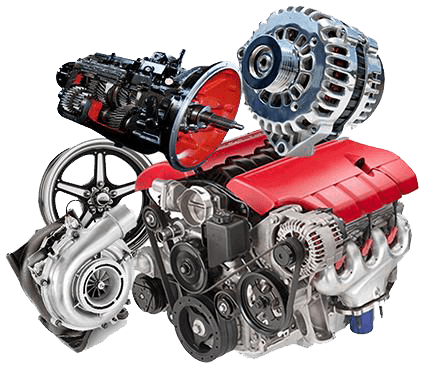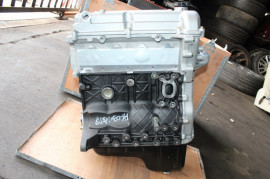Boost Your Trip with a High-Quality Opel Corsa Engine
Boost Your Trip with a High-Quality Opel Corsa Engine
Blog Article
Exploring the Inner Functions of a Compact Lorry's Engine System
As drivers, we usually take for granted the detailed procedures that happen within the confines of our automobile's engine system. The small yet intricate equipment that drives us ahead is a wonder of engineering accuracy and coordination. From the regulated surges in the combustion chamber to the meticulous timing of fuel shot, every part plays an important duty in the smooth procedure of the engine. In this expedition of a compact vehicle's engine system, we will certainly untangle the inner workings of this mechanical harmony, shedding light on the secrets that drive us onward on our everyday journeys.
Combustion Refine Summary
The combustion process in a small vehicle's engine system is an important mechanism that successfully transforms gas right into power to power the vehicle. This process occurs within the burning chamber of the engine, where fuel and air mix, spark, and create controlled explosions. The burning procedure is composed of four main stages: intake, power, compression, and exhaust.
During the consumption stage, the piston moves downward, pulling in a mix of air and gas into the combustion chamber. The following phase, compression, entails the piston moving up, compressing the air-fuel mixture to boost its potency. Consequently, in the power stage, the ignition system stirs up the pressed blend, resulting in a rapid expansion of gases that forces the piston pull back. This descending movement produces the power needed to drive the car. In the exhaust phase, the burned gases are eliminated from the burning chamber with the exhaust shutoff, preparing the chamber for the following cycle. This cyclic combustion procedure is fundamental to the procedure of a portable car's engine system, guaranteeing reliable energy conversion for propulsion.
Piston and Cyndrical Tube Interaction

The piston's exact fit within the cylinder is necessary for keeping ideal compression and avoiding power loss during combustion. Limited clearances between the piston and cyndrical tube walls make certain efficient sealing, enabling the piston to move smoothly without permitting gases to leak past. Appropriate lubrication is also crucial to reduce rubbing and wear between these components, enhancing longevity and performance.
Moreover, the layout and materials used in making the piston and cyndrical tube effect engine performance and toughness. Modern engines often employ light-weight yet sturdy materials like light weight aluminum alloys for pistons and cylinder linings to minimize inertia and boost thermal efficiency. On the whole, the harmonious communication between the piston and cyndrical tube is essential to the engine's capability and total performance.
Gas Injection System Performance
Gas injection systems in small vehicle engines play a critical role in specifically supplying gas to the burning chamber for reliable and regulated ignition. The fuel shot system functions by infusing fuel into the burning chamber at the optimum moment during the engine's operation (opel corsa engine). This precise timing makes certain that the fuel mixes equally with the air for correct burning, causing enhanced fuel effectiveness and reduced emissions
There are mostly 2 types of gas injection systems utilized in portable car engines: my explanation port fuel shot (PFI) and straight fuel shot (DFI) PFI systems inject fuel into the consumption port before the intake valve, while DFI systems infuse gas directly right into the combustion chamber. Both systems have their advantages, with DFI supplying far better fuel atomization and PFI offering a much more cost-effective remedy.
Recognizing Engine Air Conditioning Mechanisms
Efficient procedure of a portable lorry's engine counts greatly on the effectiveness of its cooling systems. Engine air conditioning is important to prevent getting too hot, which can lead important site to serious damages and lowered efficiency. The air conditioning system in a small lorry typically contains several components interacting to manage the engine temperature level. One critical part is the radiator, which makes use of coolant to take in heat from the engine. As the warm coolant streams through the radiator, it releases warm right into the air, cooling off before returning to the engine. The water pump distributes the coolant through the engine and radiator, guaranteeing a regular circulation to regulate temperature. In addition, the thermostat helps manage the coolant flow to preserve optimum engine temperature. Some automobiles likewise have cooling followers that turn on when extra cooling is required, such as throughout rush hour or hot climate. Understanding these engine air conditioning systems is essential for preserving the efficiency and longevity of a portable vehicle's engine system.

Exhaust System Parts Explained
The optimal performance of a compact automobile's engine cooling systems depends on a complementary system recognized as the exhaust system, which consists of different vital components for Full Article guaranteeing reliable discharges and engine efficiency. The exhaust manifold collects exhaust gases from the engine's cylinders and paths them to the catalytic converter.
One vital part of the exhaust system is the oxygen sensing unit, which checks the oxygen levels in the exhaust gases to help regulate fuel intake and make sure optimum engine efficiency. opel corsa engine. Additionally, the resonator might exist in some exhaust systems to minimize noise levels. Generally, the exhaust system plays a crucial duty in preserving engine effectiveness, minimizing dangerous exhausts, and making sure a quieter driving experience for compact lorry owners

Verdict
To conclude, the compact vehicle's engine system is an intricate mix of elements that work with each other to help with the burning procedure, convert gas right into power, and eliminate waste gases. Understanding the inner functions of the engine system, including the piston and cyndrical tube interaction, fuel shot system, engine air conditioning systems, and exhaust system elements, is essential for maintaining ideal efficiency and efficiency of the vehicle.
The combustion procedure in a small lorry's engine system is a crucial system that efficiently converts gas into power to power the lorry.Fuel injection systems in compact automobile engines play an essential function in exactly supplying gas to the burning chamber for controlled and efficient ignition.There are largely two types of gas shot systems utilized in small automobile engines: port fuel shot (PFI) and direct gas shot (DFI) Recognizing these engine air conditioning systems is crucial for keeping the performance and durability of a small vehicle's engine system.
The optimal performance of a small lorry's engine air conditioning mechanisms depends on a corresponding system understood as the exhaust system, which makes up numerous vital components for making certain efficient exhausts and engine performance.
Report this page